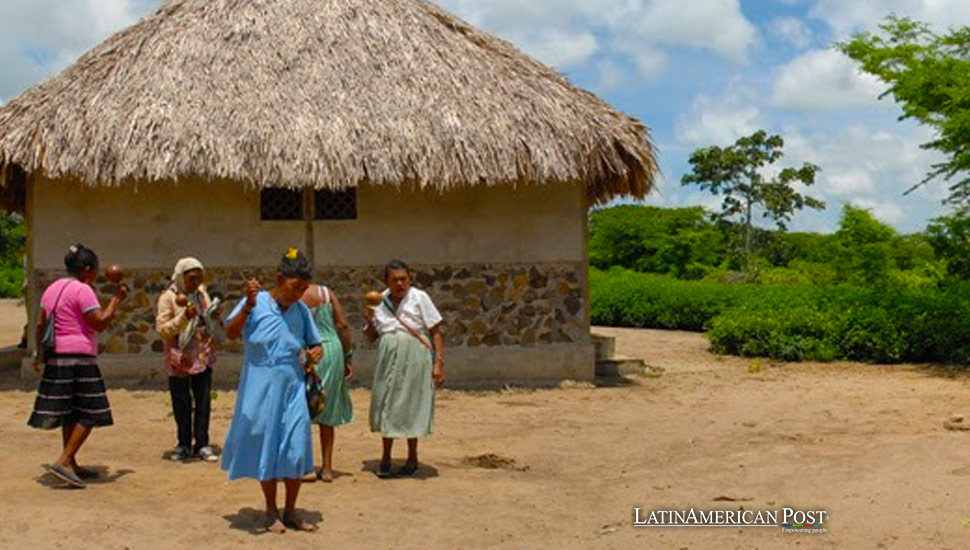Reclaimed Roots: Restoring Indigenous Lands and Cultures in Colombia

Colombia’s Land Restitution Unit has recently returned over 16,000 hectares to the Sikuani and Piapoco tribes, marking a significant step in addressing decades of rights violations and cultural erosion suffered by these indigenous communities.
In a landmark move, Colombia’s Land Restitution Unit (URT) has successfully returned more than 16,000 hectares of land to the semi-nomadic indigenous communities of Sikuani and Piapoco. This restitution marks a significant step toward rectifying the historical injustices that these groups have endured over four decades, including the loss of their land, culture, cosmology, and traditions.
Restitution in Ancestral Territories
The handover took place in the ancestral territories of Florida Kawananae, stretching between Puerto Gaitán in the central Meta region and Cumaribo in Vichada, bordering Venezuela. This restitution was in adherence to a ruling on August 17, 2023, by the Specialized Land Restitution Chamber of the High Court of Bogotá, marking the first such ruling in favor of an indigenous community in Meta and the second in Vichada.
The indigenous communities affected have not only lost their land but also the very essence of their identity—their culture, cosmological beliefs, and ancestral traditions. This loss had pushed them to the brink of extinction, as the encroachment of external forces on their territories altered the landscape of their traditional ways of life.
The restoration process was a collaborative effort involving the URT, the Ombudsman’s Office, and the support of the Military Forces and Police. The territories in question had been severely impacted by illegal activities, including coca processing laboratories and clandestine airstrips that were also used as mass graves.
Giovani Yule, the director of the URT, highlighted the extensive suffering endured by these communities amid the conflict, including mass forced displacements and a compromised spiritual connection with their land. The peak of victimizing events coincided with the rise of drug trafficking and land acquisitions by emerald miners, complicating the situation further with the arrival of paramilitary groups.
A Broader Regional Struggle
The context of these restitutions is not isolated to Colombia but reflects a broader regional struggle where more significant economic and political interests across Latin America often overshadow indigenous rights. Similar battles are fought in countries like Brazil, where the Amazon rainforest’s indigenous territories face threats from illegal logging and mining, and in Honduras, where environmental and indigenous rights activists combat the encroachment of agribusiness and infrastructural developments.
In these contexts, land restitution is more than just a legal remedy; it is a vital component of cultural survival. For the Sikuani and Piapoco tribes, returning to their lands is a chance to reconnect with their roots and revive their traditions, which are crucial for the continuity of their cultural identity and the well-being of their communities.
The story of these communities is a testament to the resilience and perseverance required to overcome the myriad challenges posed by external threats to indigenous lands. It also underscores the need for national governments and international bodies to enforce stronger protections for indigenous rights and provide platforms for these communities to reclaim their territories, heritage, and autonomy.
Furthermore, restoring these lands offers an opportunity to learn from past errors and improve the mechanisms of justice and reparation for indigenous peoples. It calls for an integrated approach involving legal, environmental, and cultural aspects to ensure that the restitution processes are not merely symbolic but lead to tangible improvements in the lives of indigenous communities.
Global Support for Indigenous Rights
As Colombia and other nations continue to address these complex challenges, the international community must also support these efforts. This can be done by fostering dialogue, providing technical assistance, and ensuring that the global policies affecting indigenous rights, such as those related to biodiversity and climate change, are aligned with the principles of justice and equity.
Also read: Plastics Threaten Malpelo’s Waters in the Colombian Pacific
The return of these 16,000 hectares in Colombia not only restores land but also renews hope for a future where indigenous cultures can thrive free from the shadows of oppression and neglect. It is a poignant reminder of the enduring spirit of the indigenous peoples of Latin America and their ongoing struggle for justice and recognition.




